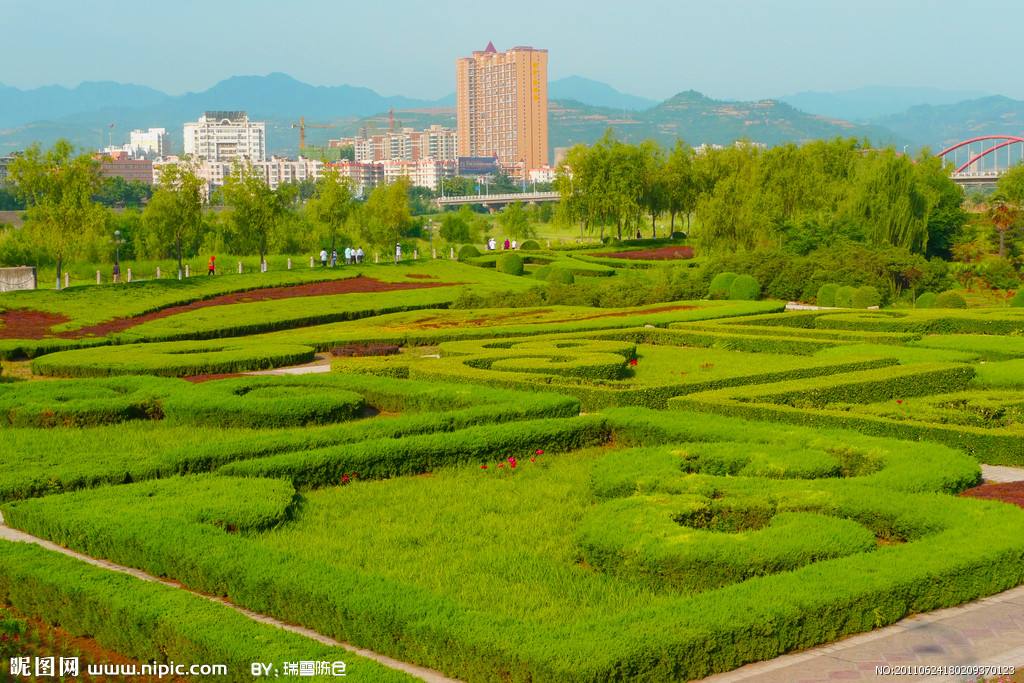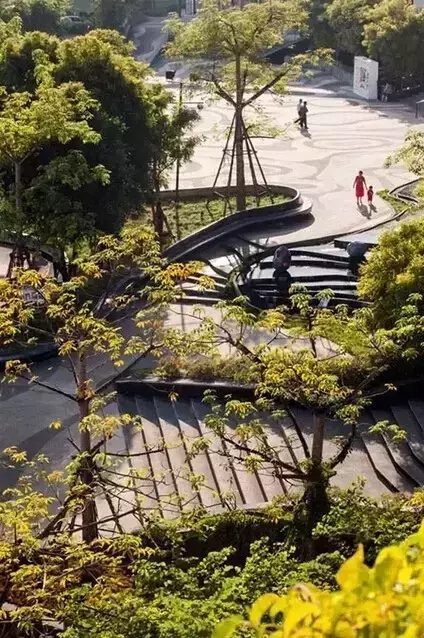Eight Principles of Pavement Design
Road paving design is a basic element in landscape design. Therefore, harmonious road paving is particularly important to the overall beauty of the garden landscape. The perfect road paving should follow the following principles in the design process:
- The ratio of green space and paved road surface should be coordinated
First of all, the designer must determine the appropriate relationship between the paving area and the green area. Laws and regulations vary from country to country, but when the green area has the smallest footprint, don’t be forced to accept that this is the only solution. Expanding the green area will improve the quality of ecological, economic and social life. Of course, the footprint mainly depends on the function of this area. However, designers should not forget that the design of trails and pavement is not the only way to define composition and patterns.
- Apply the function of paving materials to paving design
When specifying paving materials, one of the mistakes often made by designers is to forget the main function of the paving materials. The function of the trail is for vehicles and pedestrians to move. This is why when defining paving materials, the most important thing is to develop the prospect of paving pavement. The function of the venue is different, the flow of people will be different, and the pressure on the road will be different. The bearing capacity of the pavement determines the material we choose and the thickness of the pavement.
- The foundation in the paving design should be good
Concrete paving stones, planks, natural stones, etc. only constitute the upper part of the road surface. The other two important components of the pavement are the substructure and the ground foundation. The correct planning of pavement construction and the correct choice of raw materials determine the convenience and durability of the pavement. It is worth mentioning that our company is developing a new ground floor material, which is novel and environmentally friendly, with a maximum load-bearing capacity of 80 tons per square meter. After we officially launch the new base material, everyone is welcome to consult.
4.fully consider the technical requirements of paving materials
There are various decorative paving materials on the market, and their styles are still increasing. For example, according to the geophysical origin and structure of the stones, natural stones are very different in technical characteristics and durability. At the beginning of the design process, the designer selects certain types of stones based on colors and patterns. In order to avoid possible problems, designers should know what kind of pressure this material can withstand, what kind of chemical substances can withstand erosion, whether it is durable, etc.
- Pay attention to the aesthetic function of pavement
So far, we have discussed the practical and technical aspects of paving materials. But sometimes (especially when discussing sidewalks) the visual effects of decorative paving materials are also important. In garden paving, it is easy to go to two extremes: either too many materials of different styles are used in one place, or too many simple and single patterns. Function and landscape effect must be combined. Clear and appropriate materials, colors, shapes, textures and patterns can make you stand out.
- Strictly implement the paving procedures of paving materials
The way paving elements are placed can highlight the width or depth of the road. The pattern of the road can significantly affect the perception of the scale of the space. If large elements are used in a space, the space will look smaller. Conversely, if it is paved The materials should be small, and the same space looks larger. Consider the user’s experience and proceed from the user’s perspective. Stimulate all the potential in the pavement design, improve and promote the interaction between the project and people.
- Combine different materials for pavement design
The first principle here is simple-for each area, only one type of ground is suitable. The use of transitional strips of neutral material between two opposing products is recommended. The designer should know that when there is a height change, such as a step or slope, the type of paving material should be changed to warn the user of this change. Some people will say that the combination of materials depends entirely on budget. Budget is a key consideration when choosing paving materials. However, it has not always been the decisive factor in the final plan. Amazing and good projects can also be obtained through simple and inexpensive techniques such as stone drilling and repair.
- Pavement paving design should pay attention to details
When applying detailed ideas to paving, we should focus on the main features, such as edges, surface slopes, ground drainage equipment, and the construction of drainage facilities for the pavement and their base. For example, edges are not only important for the aesthetic effect of decorative paving materials, but can also be used to support and protect buildings. It’s even related to road design, so don’t cut corners in the final stage. Although perfection is an abstract and fantasy concept, the expectation of perfection motivates people to make continuous progress. Even if it is not available, we can at least get closer and closer to it. This is how we do most of our work.





